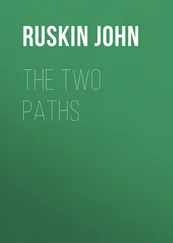John Ruskin - The Elements of Drawing, in Three Letters to Beginners
Здесь есть возможность читать онлайн «John Ruskin - The Elements of Drawing, in Three Letters to Beginners» — ознакомительный отрывок электронной книги совершенно бесплатно, а после прочтения отрывка купить полную версию. В некоторых случаях можно слушать аудио, скачать через торрент в формате fb2 и присутствует краткое содержание. Жанр: foreign_antique, foreign_home, literature_19, visual_arts, на английском языке. Описание произведения, (предисловие) а так же отзывы посетителей доступны на портале библиотеки ЛибКат.
- Название:The Elements of Drawing, in Three Letters to Beginners
- Автор:
- Жанр:
- Год:неизвестен
- ISBN:нет данных
- Рейтинг книги:4 / 5. Голосов: 1
-
Избранное:Добавить в избранное
- Отзывы:
-
Ваша оценка:
- 80
- 1
- 2
- 3
- 4
- 5
The Elements of Drawing, in Three Letters to Beginners: краткое содержание, описание и аннотация
Предлагаем к чтению аннотацию, описание, краткое содержание или предисловие (зависит от того, что написал сам автор книги «The Elements of Drawing, in Three Letters to Beginners»). Если вы не нашли необходимую информацию о книге — напишите в комментариях, мы постараемся отыскать её.
The Elements of Drawing, in Three Letters to Beginners — читать онлайн ознакомительный отрывок
Ниже представлен текст книги, разбитый по страницам. Система сохранения места последней прочитанной страницы, позволяет с удобством читать онлайн бесплатно книгу «The Elements of Drawing, in Three Letters to Beginners», без необходимости каждый раз заново искать на чём Вы остановились. Поставьте закладку, и сможете в любой момент перейти на страницу, на которой закончили чтение.
Интервал:
Закладка:
12. As soon as you can copy every curve slowly and accurately, you have made satisfactory progress; but you will find the difficulty is in the slowness. It is easy to draw what appears to be a good line with a sweep of the hand, or with what is called freedom; 5the real difficulty and masterliness is in never letting the hand be free, but keeping it under entire control at every part of the line.
EXERCISE III
13. Meantime, you are always to be going on with your shaded squares, and chiefly with these, the outline exercises being taken up only for rest.
Fig. 2.
As soon as you find you have some command of the pen as a shading instrument, and can lay a pale or dark tint as you choose, try to produce gradated spaces like Fig. 2, the dark tint passing gradually into the lighter ones. Nearly all expression of form, in drawing, depends on your power of gradating delicately; and the gradation is always most skillful which passes from one tint into another very little paler. Draw, therefore, two parallel lines for limits to your work, as in Fig. 2, and try to gradate the shade evenly from white to black, passing over the greatest possible distance, yet so that every part of the band may have visible change in it. The perception of gradation is very deficient in all beginners (not to say, in many artists), and you will probably, for some time, think your gradation skillful enough, when it is quite patchy and imperfect. By getting a piece of gray shaded ribbon, and comparing it with your drawing, you may arrive, in early stages of your work, at a wholesome dissatisfaction with it. Widen your band little by little as you get more skillful, so as to give the gradation more lateral space, and accustom yourself at the same time to look for gradated spaces in Nature. The sky is the largest and the most beautiful; watch it at twilight, after the sun is down, and try to consider each pane of glass in the window you look through as a piece of paper colored blue, or gray, or purple, as it happens to be, and observe how quietly and continuously the gradation extends over the space in the window, of one or two feet square. Observe the shades on the outside and inside of a common white cup or bowl, which make it look round and hollow; 6and then on folds of white drapery; and thus gradually you will be led to observe the more subtle transitions of the light as it increases or declines on flat surfaces. At last, when your eye gets keen and true, you will see gradation on everything in Nature.
14. But it will not be in your power yet awhile to draw from any objects in which the gradations are varied and complicated; nor will it be a bad omen for your future progress, and for the use that art is to be made of by you, if the first thing at which you aim should be a little bit of sky. So take any narrow space of evening sky, that you can usually see, between the boughs of a tree, or between two chimneys, or through the corner of a pane in the window you like best to sit at, and try to gradate a little space of white paper as evenly as that is gradated—as tenderly you cannot gradate it without color, no, nor with color either; but you may do it as evenly; or, if you get impatient with your spots and lines of ink, when you look at the beauty of the sky, the sense you will have gained of that beauty is something to be thankful for. But you ought not to be impatient with your pen and ink; for all great painters, however delicate their perception of color, are fond of the peculiar effect of light which may be got in a pen-and-ink sketch, and in a wood-cut, by the gleaming of the white paper between the black lines; and if you cannot gradate well with pure black lines, you will never gradate well with pale ones. By looking at any common wood-cuts, in the cheap publications of the day, you may see how gradation is given to the sky by leaving the lines farther and farther apart; but you must make your lines as fine as you can, as well as far apart, towards the light; and do not try to make them long or straight, but let them cross irregularly in any directions easy to your hand, depending on nothing but their gradation for your effect. On this point of direction of lines, however, I shall have to tell you more, presently; in the meantime, do not trouble yourself about it.
EXERCISE IV
15. As soon as you find you can gradate tolerably with the pen, take an H. or HH. pencil, using its point to produce shade, from the darkest possible to the palest, in exactly the same manner as the pen, lightening, however, now with india-rubber instead of the penknife. You will find that all pale tints of shade are thus easily producible with great precision and tenderness, but that you cannot get the same dark power as with the pen and ink, and that the surface of the shade is apt to become glossy and metallic, or dirty-looking, or sandy. Persevere, however, in trying to bring it to evenness with the fine point, removing any single speck or line that may be too black, with the point of the knife: you must not scratch the whole with the knife as you do the ink. If you find the texture very speckled-looking, lighten it all over with india-rubber, and recover it again with sharp, and excessively fine touches of the pencil point, bringing the parts that are too pale to perfect evenness with the darker spots.
You cannot use the point too delicately or cunningly in doing this; work with it as if you were drawing the down on a butterfly's wing.
16. At this stage of your progress, if not before, you may be assured that some clever friend will come in, and hold up his hands in mocking amazement, and ask you who could set you to that "niggling;" and if you persevere in it, you will have to sustain considerable persecution from your artistical acquaintances generally, who will tell you that all good drawing depends on "boldness." But never mind them. You do not hear them tell a child, beginning music, to lay its little hand with a crash among the keys, in imitation of the great masters: yet they might, as reasonably as they may tell you to be bold in the present state of your knowledge. Bold, in the sense of being undaunted, yes; but bold in the sense of being careless, confident, or exhibitory,—no,—no, and a thousand times no; for, even if you were not a beginner, it would be bad advice that made you bold. Mischief may easily be done quickly, but good and beautiful work is generally done slowly; you will find no boldness in the way a flower or a bird's wing is painted; and if Nature is not bold at her work, do you think you ought to be at yours? So never mind what people say, but work with your pencil point very patiently; and if you can trust me in anything, trust me when I tell you, that though there are all kinds and ways of art,—large work for large places, small work for narrow places, slow work for people who can wait, and quick work for people who cannot,—there is one quality, and, I think, only one, in which all great and good art agrees;—it is all delicate art. Coarse art is always bad art. You cannot understand this at present, because you do not know yet how much tender thought, and subtle care, the great painters put into touches that at first look coarse; but, believe me, it is true, and you will find it is so in due time.
17. You will be perhaps also troubled, in these first essays at pencil drawing, by noticing that more delicate gradations are got in an instant by a chance touch of the india-rubber, than by an hour's labor with the point; and you may wonder why I tell you to produce tints so painfully, which might, it appears, be obtained with ease. But there are two reasons: the first, that when you come to draw forms, you must be able to gradate with absolute precision, in whatever place and direction you wish; not in any wise vaguely, as the india-rubber does it: and, secondly, that all natural shadows are more or less mingled with gleams of light. In the darkness of ground there is the light of the little pebbles or dust; in the darkness of foliage, the glitter of the leaves; in the darkness of flesh, transparency; in that of a stone, granulation: in every case there is some mingling of light, which cannot be represented by the leaden tone which you get by rubbing, or by an instrument known to artists as the "stump." When you can manage the point properly, you will indeed be able to do much also with this instrument, or with your fingers; but then you will have to retouch the flat tints afterwards, so as to put life and light into them, and that can only be done with the point. Labor on, therefore, courageously, with that only.
Читать дальшеИнтервал:
Закладка:
Похожие книги на «The Elements of Drawing, in Three Letters to Beginners»
Представляем Вашему вниманию похожие книги на «The Elements of Drawing, in Three Letters to Beginners» списком для выбора. Мы отобрали схожую по названию и смыслу литературу в надежде предоставить читателям больше вариантов отыскать новые, интересные, ещё непрочитанные произведения.
Обсуждение, отзывы о книге «The Elements of Drawing, in Three Letters to Beginners» и просто собственные мнения читателей. Оставьте ваши комментарии, напишите, что Вы думаете о произведении, его смысле или главных героях. Укажите что конкретно понравилось, а что нет, и почему Вы так считаете.












